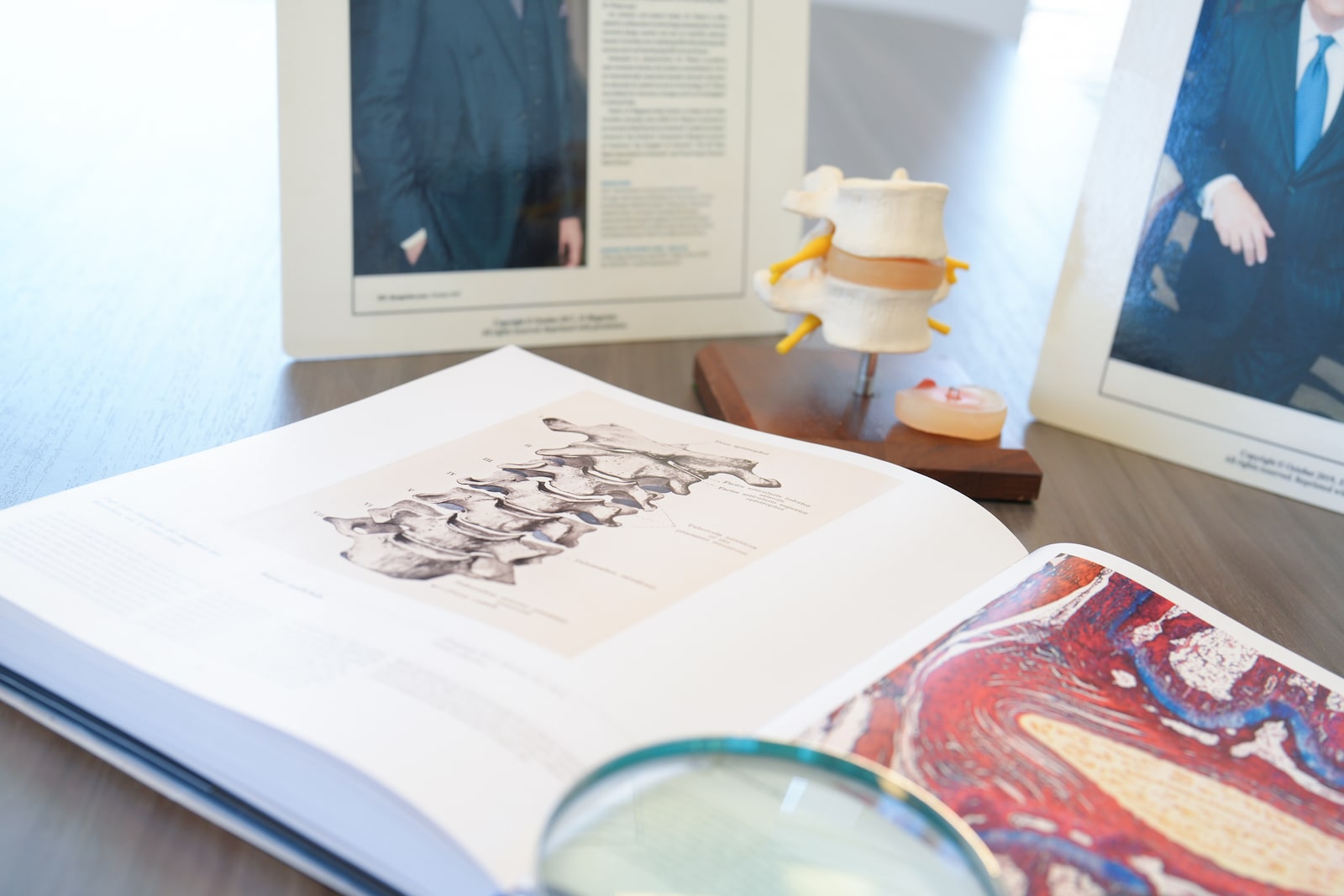Artificial Disc Replacement vs. Spinal Fusion: Navigating Your Spine Surgery Options
When chronic neck or back pain interferes with daily life and conservative treatments fail to provide relief, spine surgery may be necessary. Two of the most widely used surgical options are artificial disc replacement (ADR) and spinal fusion. To make the best choice, it helps to have a thorough understanding the procedures, their benefits and their differences. Dr. John Peloza, an internationally recognized spine surgeon with more than 30 years of experience, emphasizes the importance of informed decision-making. This article provides a clear comparison of ADR and spinal fusion to help you discuss the best treatment option with your spine specialist.
The Common Goal: Alleviating Pain and Restoring Function
Both artificial disc replacement (ADR) and spinal fusion can alleviate pain caused by damaged or degenerated spinal discs. That is because in both procedures, Dr. Peloza completely removes the problematic disc. What happens next is the fundamental difference between ADR and spinal fusion.
What is Spinal Fusion?
Spinal fusion is a surgical procedure that to permanently connects or fuses two or more vertebrae in your spine. Once fused, the spinal bones no longer move independent from one another.
How it Works: The damaged spinal disc is removed from between the vertebrae. Bone grafts (either from the patient, a donor, or synthetic material) are then placed in the space previously occupied by the disc. Often, instrumentation such as screws, rods, or plates is used to hold the vertebrae together, providing stability while the bone graft heals and fuses the vertebrae into a single, solid bone.
Pros:
- Pain Relief: Can provide significant pain relief, especially in cases of spinal instability or severe degeneration.
- Long History: It has been used for a long time.
- Good Results: It is highly effective for specific spinal conditions.
Cons:
- Loss of Motion: The procedure intentionally eliminates natural movement at the treated spinal level. This means the spine cannot move like it once did at those spinal levels.
- Adjacent Segment Degeneration (ASD): Fusing one segment can increase mechanical stress on the discs and joints above and below the fusion site. This added stress may accelerate degeneration in adjacent segments over time.
- Recovery Time: Recovery from spinal fusion is often longer compared to less invasive or motion-preserving surgical options. Also, it takes several months for the spinal bones to fully fuse.
- Failed Fusion: Sometimes the spinal bones (vertebra) do not fuse together.
What is Artificial Disc Replacement (ADR)?
Artificial disc replacement is a spine surgery procedure to remove a damaged spinal disc and replace it with an artificial disc made of metal and/or very hard plastics.
How it Works: Similar to fusion, the problematic disc is removed. However, instead of fusing the vertebrae, an artificial disc implant is inserted into the space. This implant is designed to mimic the function of a natural disc, allowing for continued motion and flexibility in that segment of the spine.
Pros:
- Motion Preservation: The primary advantage is maintaining natural spinal movement. This can lead to a more natural feel and function post-surgery.
- Reduced Stress on Adjacent Discs: By preserving motion, ADR may reduce the abnormal stress placed on neighboring discs, potentially lowering the risk of adjacent segment degeneration compared to fusion.
- Faster Recovery: Patients often experience a quicker recovery and return to daily activities compared to fusion surgery.
- Improved Long-Term Spinal Health: For many, maintaining motion helps in the overall health and biomechanics of the spine. Plus, patients can generally be more active overall because of their spinal mobility.
Cons:
- Not Everyone is Eligible: ADR is not suitable for everyone. It is generally not recommended for patients with significant spinal instability (like advanced spondylolisthesis), severe facet joint arthritis, osteoporosis, or certain types of spinal deformity.
- Implant Longevity: Modern artificial discs are designed for durability and many are expected to last 15-20 years or even a lifetime. However, it is possible that the artificial device can subside into bone, loosen, migrate, or wear down.
Artificial Disc Replacement vs. Fusion: Key Differences at a Glance
| Feature | Spinal Fusion | Artificial Disc Replacement (ADR) |
| Spinal Motion | Eliminates motion at the treated level | Preserves or restores motion at the treated level |
| Adjacent Segments | May increase mechanical stress on adjacent discs, potentially accelerating degeneration | Designed to reduce stress on adjacent discs |
| Recovery Time | Typically longer and with more activity restrictions during early recovery | Often shorter and with earlier return to activity |
| Primary Goal | Pain and symptom relief by removing the problematic disc; Provide stabilization through immobilization | Pain and symptom relief by removing the problematic disc; Maintaining segmental motion |
| Ideal Candidate | Broader indications, including cases with instability, deformity, or severe degeneration | Selected patients with good bone quality, limited facet joint disease, and no significant instability or deformity |
| Risk of Future Surgery at Adjacent Levels | Potentially higher due to adjacent segment degeneration (ASD) | Potentially lower compared to fusion |
Which Procedure is Right for Me? Making the Decision with Dr. Peloza
The choice between ADR and spinal fusion is highly personal and depends on many factors. Dr. Peloza will conduct a thorough evaluation and consider the following:
- Your Specific Diagnosis: Conditions like degenerative disc disease, herniated discs, or some forms of spinal stenosis can be treated with both procedures, but the specifics matter. Fusion may be necessary for conditions like spondylolisthesis with significant instability or severe spinal deformity.
- Overall Spinal Health: Factors such as the condition of your facet joints, the presence of osteoporosis, and any prior spine surgeries play a critical role in determining suitability
- Severity of Symptoms and Disc Degeneration: The extent of disc damage and the impact on nerve structures may influence the recommended approach.
- Your Age, Activity Level, and Lifestyle Goals: What you hope to achieve with surgery plays a vital role.
A detailed discussion of your diagnostic imaging (such as MRI or CT scans), your current symptoms, and your long-term goals will guide the recommendation for the most appropriate surgical option.
Why Trust Dr. John Peloza for Your Spine Surgery Decision?
With extensive experience in both advanced spinal fusion techniques and motion-preserving procedures, Dr. John Peloza offers a balanced and individualized approach to surgical decision-making. His expertise includes specialization in minimally invasive and motion-preserving techniques, ensuring that each patient receives a treatment plan tailored to their specific condition and goals. By incorporating state-of-the-art technology, Dr. Peloza prioritizes both surgical precision and patient safety. Throughout the process, he is committed to patient-centered care, providing clear information and support at every stage of the treatment journey.
Moving Forward: Your Path to Relief
Both artificial disc replacement and spinal fusion are well-established procedures that have helped many individuals overcome chronic spinal pain and regain quality of life. The key to success lies in selecting the procedure that best matches each patient’s specific condition and treatment goals. If you are considering spine surgery, Dr. Peloza encourages you to schedule a consultation. During this visit, you will have the opportunity to discuss your symptoms, review your diagnostic imaging, and determine whether ADR, spinal fusion, or another treatment approach is the most appropriate path to pain and symptom relief.
Contact Dr. John Peloza’s office in Chesterfield, MO, today to schedule your comprehensive evaluation.





